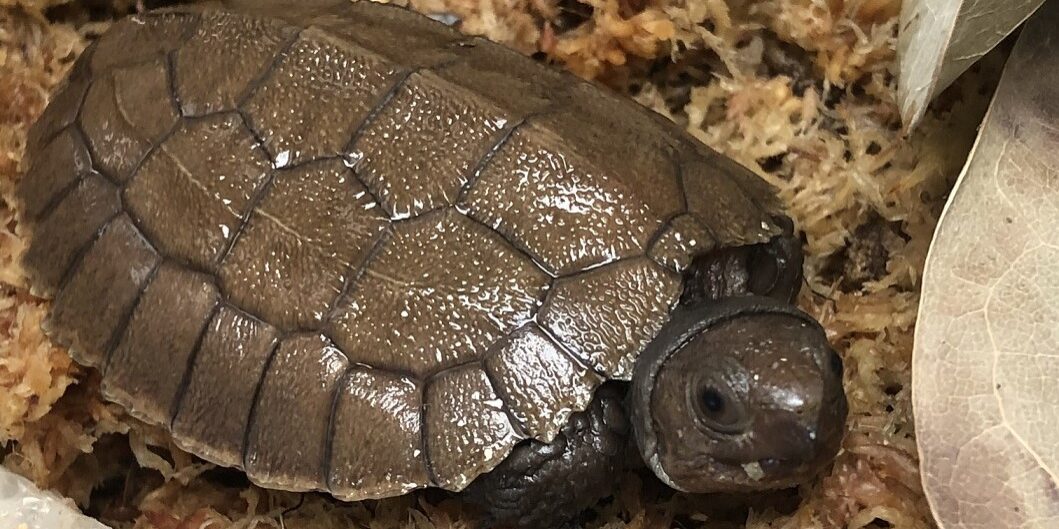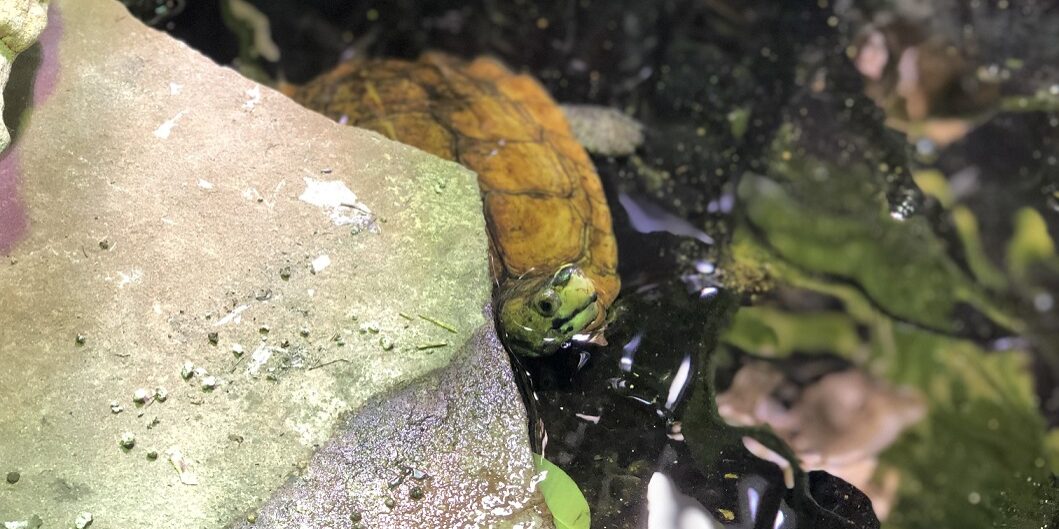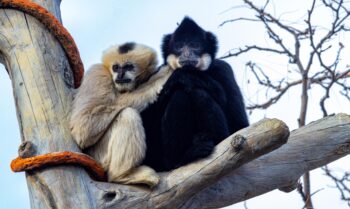August 4, 2020
Saving Species Behind the Scenes
Denver Zoo’s Sulawesi Forest Turtles are a Quiet—Yet Crucial—Conservation Success
You could do lap after lap around Tropical Discovery, checking every habitat, every sign, and you wouldn’t find our Sulawesi forest turtles. The mysterious turtle species calls Denver Zoo home, but lives high above the guests touring Tropical Discovery, in a custom-made habitat on the second floor. Why would Denver Zoo have a species no one can see? And why is this species and our recent breeding success of it a big deal?

A Dwindling Species
At first glance, the Sulawesi forest turtle doesn’t look like a remarkable species. Native to the northern forests of the island of Sulawesi in Indonesia, adult turtles average just under a foot long, and have a brown shell. Males can be identified by their white heads, and tend to be larger than females. They’re also one of the most critically endangered turtle species in the world. We don’t know exactly how many remain, but they’re increasingly hard to find in their native habitat. The biggest threats to the species include habitat loss, wildlife trade and human consumption. Despite being outlawed in 2002, the turtles are still exported illegally, causing the species to suffer. Unlike many turtle species that lay dozens or even hundreds of eggs at a time, the Sulawesi forest turtle will lay only one to two eggs per clutch, and only lay eggs a few times a year, making it hard to increase the population.

SFT to the SSP
Sulawesi forest turtles are now a part of the Association of Zoos and Aquariums Species Survival Plan, and Denver Zoo is one of the institutions caring for and breeding these turtles. The Sulawesi forest turtle is a reclusive, shy species, and wouldn’t thrive in a typical Zoo habitat, so the individuals here at the Zoo are living the life in a large habitat upstairs in Tropical Discovery, designed to mimic their natural habitat and encourage breeding. Taking the time and care to create an ideal environment for these turtles has led to a successful breeding program, and we’ve had 22 successful hatchings since we started taking care of the species, with two more eggs incubating as of August 2020. Newly-hatched turtles are pretty cute, but we tend not to get too attached because it won’t be long before these turtles get a recommendation from the SSP, move to another AZA facility, and do their part to aid in the survival of the species.
So even though you can’t see them, know that your support of Denver Zoo is helping us save this, and many other threatened, endangered, critically endangered and extinct in the wild species every day.
Learn more about how you can support Denver Zoo, and be sure to follow us on Facebook, Instagram and Twitter for all your latest Zoo news!
Subscribe
Be among the first to hear the latest animal updates, important stories and details about all the fun happening around Denver Zoo.
Tags
-
 April 15, 2024
April 15, 2024Good Luck, Chuck!
Good Luck, Chuck! Beloved Bachelor Relocating as Part of Asian Elephant Species Survival Plan In a heartfelt and collaborative…
-
 April 15, 2024
April 15, 2024African Impact
African Impact Two New African Field Conservation ProgramsAim to Protect Gorillas + Grey Crowned Cranes We're honored to provide…
-
 March 1, 2024
March 1, 2024Last Place(s) on Earth
Last Place(s) on Earth New Asian Field Conservation Programs Protect Asian Elephants, Sumatran Orangutans + more Indonesia's Leuser Ecosystem…

